Anchor Text Best Practices For SEO In 2024
In the ever-evolving landscape of SEO, staying up-to-date with the latest best practices is crucial to maintaining and improving a website’s search engine ranking.
Understanding anchor text and its best practices is more vital than ever in 2024. Google’s search algorithms have become more intelligent, giving greater importance to what users want, how relevant it is, and how good the content is. As a result, the way we use anchor text has changed, making it a cornerstone of SEO strategy.
In this article, we will dive deep into anchor text best practices for SEO in 2024, considering the changes in Google’s algorithm. We’ll discuss different types of anchor text, strategies for using it effectively, and how to steer clear of over-optimization.
Let’s start with the basics.
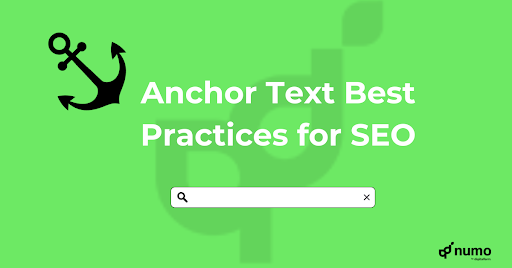
What is Anchor Text?
Anchor text is the visible and clickable text in a hyperlink. When you click the Anchor text, it directs you to another webpage or website.
Here is an example of Anchor text:
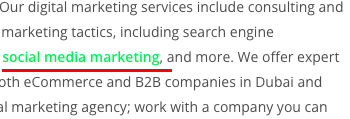
Here’s how Anchor text looks in HTML:

Why Is Anchor Text Important In SEO?
Anchor text serves several important purposes in Search Engine Optimization:
Relevance:
It helps search engines to understand the context and relevance of a linked page. When search engine crawlers follow links, they analyze the anchor text to determine the topic or keyword that the linked page is likely to be associated with.
User Experience:
For website visitors, anchor text provides a clear and concise preview of what they can expect when they click on the link.
Link Building:
When other websites link to your content, the anchor text they use can influence your website’s search engine rankings. Using relevant and descriptive anchor text can help boost your site’s authority and visibility in search results.
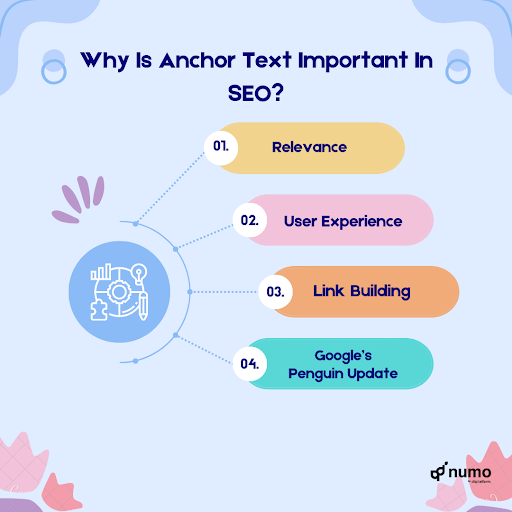
Google’s Penguin Update And Anchor Text
Google’s Penguin update, first launched in April 2012, marked a significant turning point in the world of search engine optimization (SEO). This algorithm update was specifically designed to target websites that engaged in manipulative link-building practices, particularly those involving over-optimized anchor text.
Before Penguin, some website owners used excessive exact-match anchor text attempting to boost their rankings for specific keywords. But after the Penguin update, websites that abused anchor text got penalties and saw their search rankings drop a lot.
The Penguin update changed how people do SEO. Webmasters and SEO professionals had to reconsider their approach to link-building and anchor text optimization. Instead of relying on keyword-stuffed anchor text, the emphasis shifted towards natural and diverse linking patterns.
Google’s ongoing efforts to refine the Penguin algorithm have forced website owners to adopt more ethical and user-centric SEO practices, ultimately benefiting search engine users by delivering more valuable and credible search results.
Different Types Of Anchor Text
There are several types of anchor text, each serving a different purpose in SEO and content linking strategies.
Here are some common types of anchor text with an example using the target keyword “digital marketing agency”:
Exact Match Anchor Text:
Exact match anchor text exactly matches the target keyword, as in our case it’s “digital marketing agency.”
Example: “Visit our digital marketing agency for expert services.”
Partial Match Anchor Text:
Here, the anchor text contains a portion of the target keyword, providing context without an exact match.
Example: “Our agency excels in digital marketing strategies.”
Branded Anchor Text:
This type of anchor text uses the brand name to link to the website.
Example: “Learn more about Numo Digital Marketing Agency.”
Naked URL Anchor Text:
Naked URL anchor text includes the full web address as the link text.
Example: “Visit https://numo.ae/ for more information.”
Generic Anchor Text:
Generic anchor text uses non-specific terms like “click here” or “read more” to create a link.
Example: “Click here for information on digital marketing agencies.”
Image Anchor Text:
Images can also serve as anchor text when they are linked, and their alt text provides context.
Example: A clickable image with alt text that reads, “Digital Marketing Agency Logo.”
LSI (Latent Semantic Indexing) Anchor Text:
LSI anchor text uses related keywords or synonyms to provide context and improve SEO.
Example: “Discover our services in online advertising and SEO.”
Brand + Keyword Anchor Text:
This type combines the brand name and a relevant keyword.
Example: “Explore the services offered by Numo Digital Marketing Agency.“
Long-Tail Anchor Text:
Long-tail anchor text is more specific and often contains longer phrases or questions.
Example: “Looking for a top-rated digital marketing agency in UAE?”
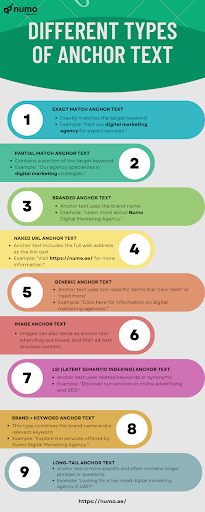
How To Use Anchor Text Effectively In 2024?
Now you know about anchor text and its different types.
However, if you aim to enhance user experience and boost your search engine rankings, you’ll need proven anchor text strategies.
In the following section, I will present some best practices for anchor text optimization that you can implement on your website right away to improve the rankings.
Let’s get started:
Align With Content Relevance
Google’s search algorithm has changed a lot over time, but one thing that has always been important is “link relevancy”.
When a link on one page (let’s call it Page A) relates closely to the topic of another page (Page B), it’s considered a relevant link. Having relevant links can help both Page A and Page B rank better for related search terms.
Link relevancy happens naturally when people link to other web content. It depends on two main things:
The Topic of the Source Page: If the source page’s subject is similar to the page it’s linking to, it creates a strong link relevance.
The Content of Anchor Text on the Source Page: The words used in the anchor text should precisely represent the content of the linked page. This reinforces the link’s relevance. When the anchor text concisely represents the content and subject matter of the destination page, it enhances the connection between the two.
In practice, links from pages with similar topics to the linked page tend to be more valuable to search engines.
For example, if a page talks about How to do keyword research and links to the Importance of long-tail keywords, that’s a strong link. But if it links to a page with cute cat pictures, it’s not relevant.
So make sure that your anchor text is relevant to the linked pages, aligns with user intent, and describes the content accurately.
It makes your content seem valuable and trustworthy to Google. As a result, this can positively impact your search engine rankings and overall SEO performance.
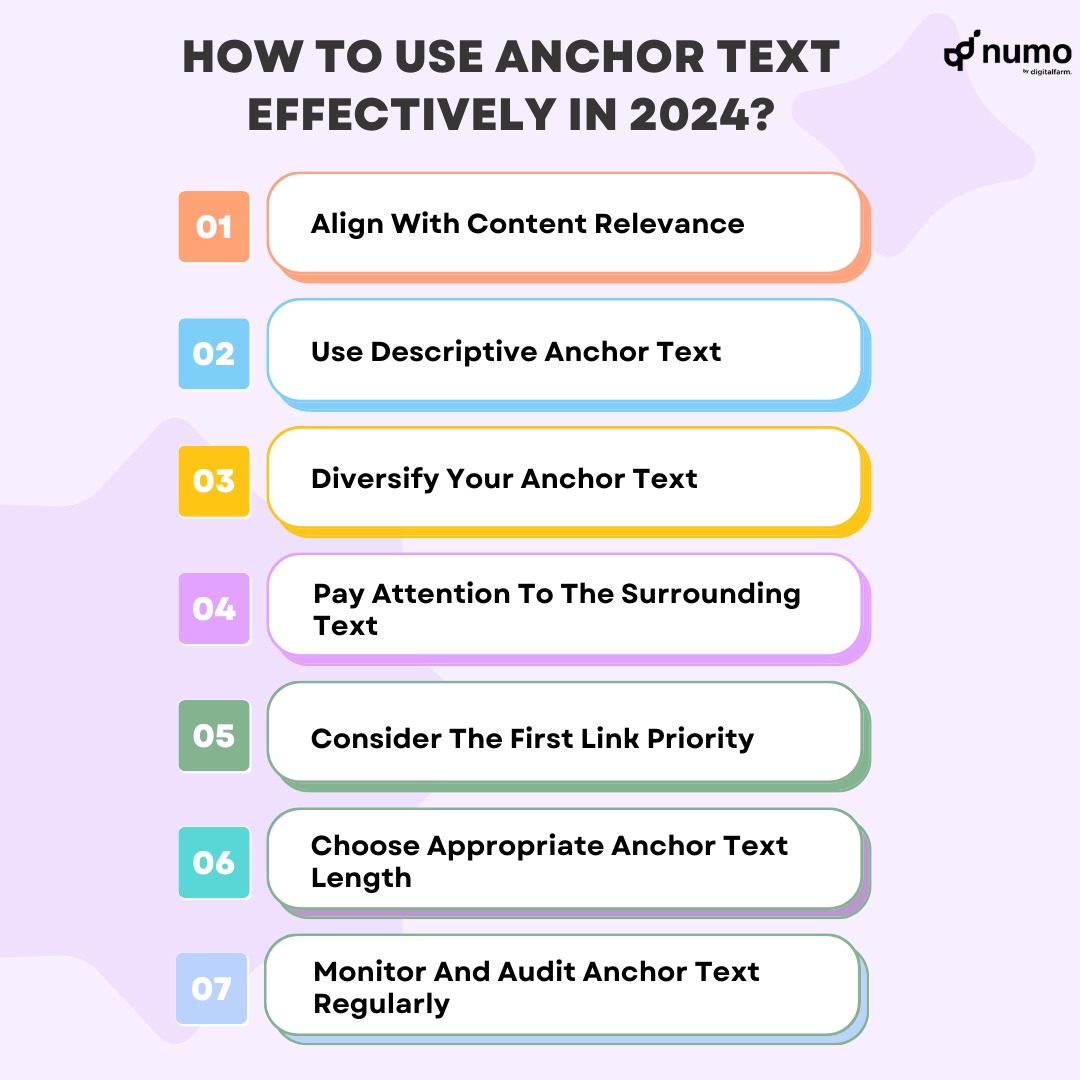
Use Descriptive Anchor Text
Descriptive anchor text refers to using text in your hyperlinks that clearly and accurately describe the content or topic of the linked page. This practice is essential for both SEO and user experience.
Since anchor text is considered as a relevant signal, it should be more relevant and highly descriptive. Avoid using generic phrases like “click here” or “read more.” Instead, use anchor text that accurately reflects the topic or keywords of the linked page.
Here is what Google says about descriptive text in its SEO Starter Guide:

Descriptive anchor text also contributes to reduced bounce rates, improved accessibility, and higher click-through rates. All of these are essential factors for a successful website.
By aligning your anchor text with the content of the linked page and keeping it concise yet informative, you can create a more user-friendly and search engine-friendly browsing experience.
It’s a simple yet powerful technique that can have a significant impact on both SEO and user satisfaction.
Diversify Your Anchor Text
Diversifying your anchor text is an important aspect of an effective SEO strategy.
Anchor text diversity refers to the practice of using various types of anchor text (such as partial match, branded, generic, etc. as mentioned earlier) when creating hyperlinks on your website or when earning backlinks from other websites.
When too many inbound links to a website contain identical anchor text, it can raise red flags with Google’s algorithms. This is because such a pattern may indicate that the links were acquired artificially rather than through genuine, organic means. This is why it’s crucial to diversify your anchor text as part of your SEO strategy to avoid any Google penalties.
Here is the case study from Zyppy, which conducted research with 23 million internal links and found that having more variations in incoming anchor text leads to increased Google search traffic.
But how can you diversify your anchor texts?
There are so many SEO experts who recommend the standard anchor text diversification rule.
But according to me, in SEO, one size doesn’t fit all. If you want to find out the optimal diversification model for your business niche, then you have to do reverse engineering. This can be achieved by analyzing your SERP competitors.
Here is how you can do that.
- Search on Google for your webpage’s main target keyword.
- Check the top five results for that keyword.
- Put them into Ahrefs
- Make a list of anchor texts for each of those pages.
- Sort these anchor texts as per the types we talked about earlier (such as Brand, partial match, generic, etc.).
- See how much of the total links fall into each category. This shows you how links are distributed.
- Average the distributions from the five results.
This gives you an idea of what anchor text distribution you should aim for. These are the types of anchor text you should use in your links to rank better on Google.
Pay Attention To The Surrounding Text
Yes, surrounding text is as important as anchor text.
There is a Google’s patent which says that text located within a specific proximity to the anchor text is indexed to gain a deeper understanding of the intended meaning of the linked page.
Before BERT, Google heavily relied on matching queries to document content.
Now, with BERT, Google can provide better answers, even if the exact words from the query aren’t on the page. This is all possible with natural language processing innovation.
So, what does this mean for your anchor text?
It means you don’t have to worry too much about using specific exact-match keywords in your anchor links to rank well.
Even if you don’t use a keyword in the link, Google will understand what it’s about by looking at the words around it.
In other words, the text near the link is super important.
If you can control the words around the link to your page, you should make them natural and related to your topic.
Consider The First Link Priority
Some people within the SEO industry have experimented with Google’s Selective Link Priority.
The study shows that if you have two or more links on a page linking to the same page, only the first one counts for search engines.
So, if you want to rank a page for a specific keyword, you should use it as an anchor in the very first link.
Choose Appropriate Anchor Text Length
It is important to choose the appropriate anchor text length.
If the anchor text is too short then it may not provide enough context for users and search engines to understand the linked content. On the other hand, if it’s too long then it may look spammy and confuse both users and search engines.
Typically, aim for five-word anchor text, conveying the link’s purpose clearly while remaining user-friendly.
Monitor And Audit Anchor Text Regularly
Keep a close watch on your anchor text strategy. Monitoring and auditing your anchor text is a fundamental aspect of effective SEO management.
By regularly reviewing and assessing the anchor text, you can ensure that your SEO strategy aligns with best practices and remains in compliance with Google’s guidelines.
To gain deeper insights into your anchor text profile, utilize SEO tools like Ahrefs, SEMrush, and Google Search Console. These tools can provide valuable data regarding the distribution of anchor text types.
Recent Google algorithms are highly sensitive to excessive use of exact match anchor text, so it’s crucial to maintain a balanced and diverse anchor text profile.
Lastly, keeping an eye on your competitors’ anchor text profiles can provide valuable insights into their SEO strategies. Analyzing their approach can help you identify opportunities for improvement and potential gaps in your own strategy.
How To Avoid Over-Optimization In 2024?
While anchor text optimization can improve your website’s rankings, over-optimization can lead to penalties from search engines like Google.
Here are some points to avoid over-optimization of anchor text while still maximizing SEO benefits.
- Avoid Keyword Stuffing: Overuse of keywords in anchor text can lead to keyword stuffing, which can harm your SEO efforts. Keep it natural and relevant.
- Diversify Anchor Text: Avoid using the same keyword-rich anchor text repeatedly. Instead, use a variety of anchor text types, including branded, generic, and descriptive phrases.
- Maintain Natural Language: Anchor text should read naturally within the context of your content. Avoid forced keyword insertion that disrupts the flow of your text.
- Avoid misleading users: Choose anchor text that helps users understand the linked content better. The user experience should be your primary focus.
- Use Descriptive Phrases: Instead of exact-match keywords, opt for anchor text that describes the linked page’s content or purpose in a user-friendly manner.
- Consider User Intent: Think about what users are looking for when they click on a link. Ensure your anchor text aligns with their expectations and provides value.
- Avoid Manipulative Tactics: Steer clear of tactics that manipulate anchor text for the sole purpose of improving rankings. This includes excessive exact-match keywords.
- Stay Informed: Keep up-to-date with SEO best practices and search engine guidelines to adapt your anchor text strategy as needed.
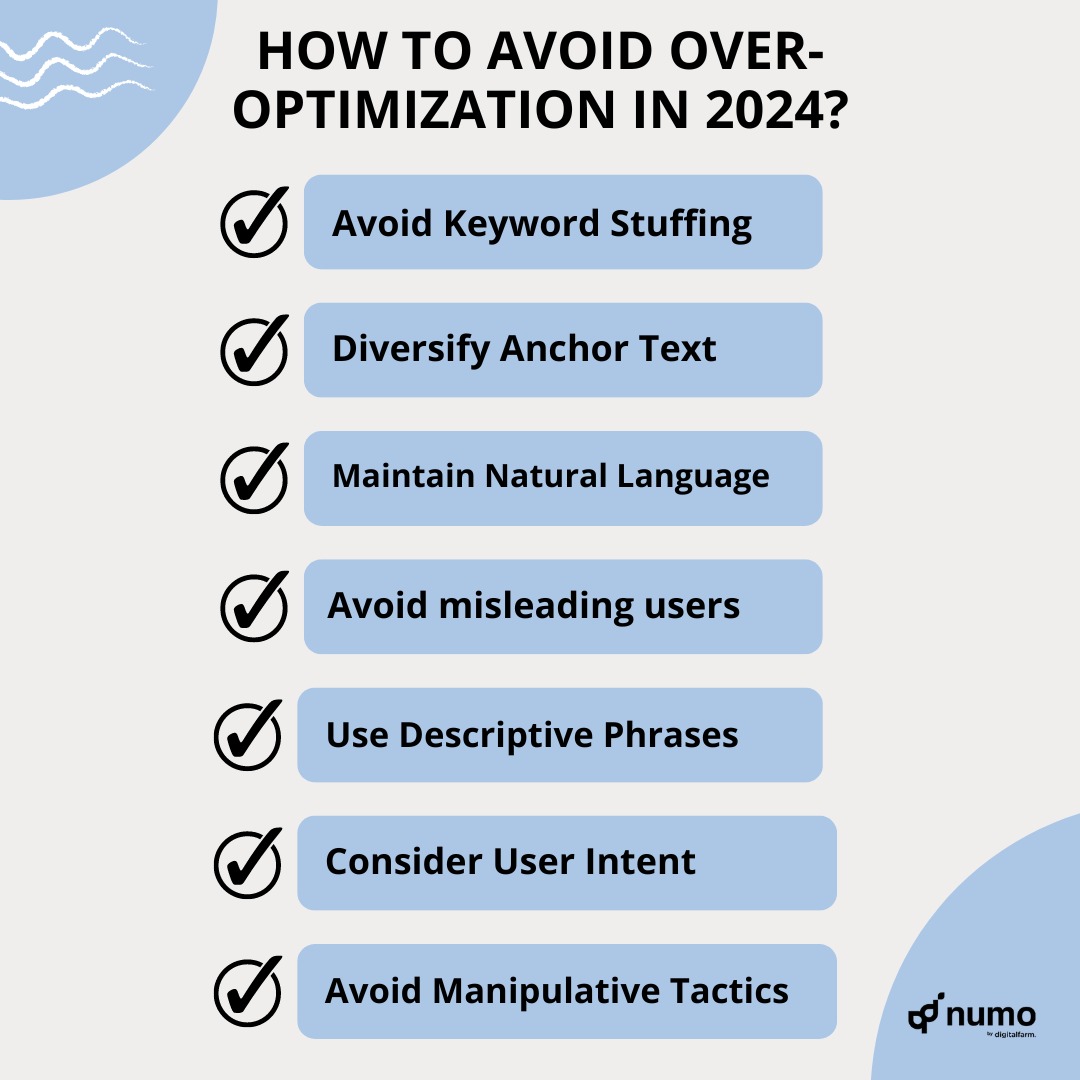
Final Thoughts
In conclusion, mastering anchor text best practices for SEO in 2024 is essential for maintaining and improving search engine rankings. By diversifying anchor text, prioritizing relevance and context, utilizing descriptive text, optimizing internal linking, monitoring distribution, and avoiding over-optimization, you can boost your website’s visibility in the search results and drive organic traffic.
Adapting to these best practices will not only enhance visibility in search engine results but also ensure a user-friendly and natural linking profile. It contributes to sustained online success in the ever-competitive digital ecosystem.
Feeling overwhelmed by the complexities of SEO and anchor text optimization? Don’t worry; you’re not alone. If you need expert assistance in implementing these best practices and want to see real improvements in your search rankings, reach out to our digital marketing agency in UAE today.
Schedule a consultation with us, and let’s work together to take your SEO game to the next level. Your online success is just one click away!

